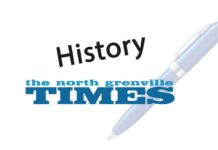Part 4: The legacy
The letter from John Henderson in Ogdensburg to William Lyon Mackenzie which started this inquiry into the mysterious Mr. Henderson was dated December 28, 1837, just a few weeks after Mackenzie’s failed attempt at rebellion in Upper Canada. How long he may have remained in Ogdensburg is unknown, but just a year later, in November, 1838, it was from Ogdensburg that a large group of around 400 rebels crossed the Saint Lawrence to try and occupy Prescott. Warned by spies, the British force of more than 2,000 regulars and militia were waiting, and the rebels were forced to turn aside and land upstream, occupying, instead of a town, a windmill. There they held out for five days against superior numbers, engaged in serious battle, and losing around thirty killed and about 150 taken prisoner.
Of these, ten were executed. Was John Henderson at the Battle of the Windmill? If so, did he escape, was he killed, or captured? At the present stage of research, we simply don’t know. We do know that a good number of his one-time fellow residents of Kemptville fought at the windmill on the side of the Crown. We also know that John Henderson had not been alone in his republican sympathies when he lived in Kemptville. After Mackenzie’s damp squib in 1837, these men had formed a secret branch of the Hunters Lodge, a network of republicans planning a renewed rising and overthrow of British rule. The Battle of the Windmill exposed these plotters, and, like Henderson, they left town, never to return.
What, then, was the legacy left behind by John Henderson, the entrepreneur who had once been a respected and leading businessman in his community on the South Branch? Aside from that one letter, what was the lasting impact on Kemptville of John Henderson and his fellow Hunters?
Even a few people can have a profound influence in a small community, and North Grenville’s population in 1838 was hardly more than 500 in total. Although the 1837 Rebellion had not touched this area directly, it and its main leader, William Lyon McKenzie, had followers here. During his reform campaigns before 1837, McKenzie had visited Kemptville and had spoken at public meetings there. Milo McCargar and John Henderson were two of the locals who had guarded the wagon from which McKenzie spoke at the meeting. These Reform supporters had to keep a very low profile after the failed rebellion, but they had organised a Hunters Lodge in Kemptville by 1838. Little is known about who was involved in this secret society, but they met in the basement of Daniel Church’s store on Clothier Street east, the frame building at no. 38 today. The members included Church, a tailor named Martin, possibly Milo McCargar and, word had it, Nathaniel Fenton, the owner of the White House Hotel which stood on the south-west corner of Clothier and Prescott Streets. Fenton, apparently, was the Secretary-Treasurer of the Lodge.
In the aftermath, nothing seems to have been done to punish the Lodge members. The tailor, Martin, had fought with the rebels at the battle of the Windmill and was wounded in his leg. He actually returned to Kemptville and continued his business there. However, after suffering from the jeers and petty vandalism of his store by locals, he left town some time afterwards. The big winner in the entire affair seems to have been Nathaniel Fenton. Now that the Hunters Lodge was defunct and the members could not identify themselves without facing the consequences, it seems their Treasurer decided to spend the funds raised by the Lodge on a big new stone house for himself. It still stands at the corner of Clothier and Rideau, and Fenton continued to live there until his death many years later.
Ironically, the house built by the funds of a republican secret society of rebels later became the home of a Conservative Member of Parliament, Dr. Charles Ferguson, and the boyhood home of a future Ontario Premier, G. Howard Ferguson.
Perhaps the longest-lasting result of those days was the consistent support conservative politics found in the region after 1837. It was a rare Reformer (later Liberal) indeed who garnered enough support around here to hope for any political career. So far as Upper Canadian, later Ontario, politics were concerned, the mysterious Mr. Henderson, wherever he ended up, had chosen the wrong side.







